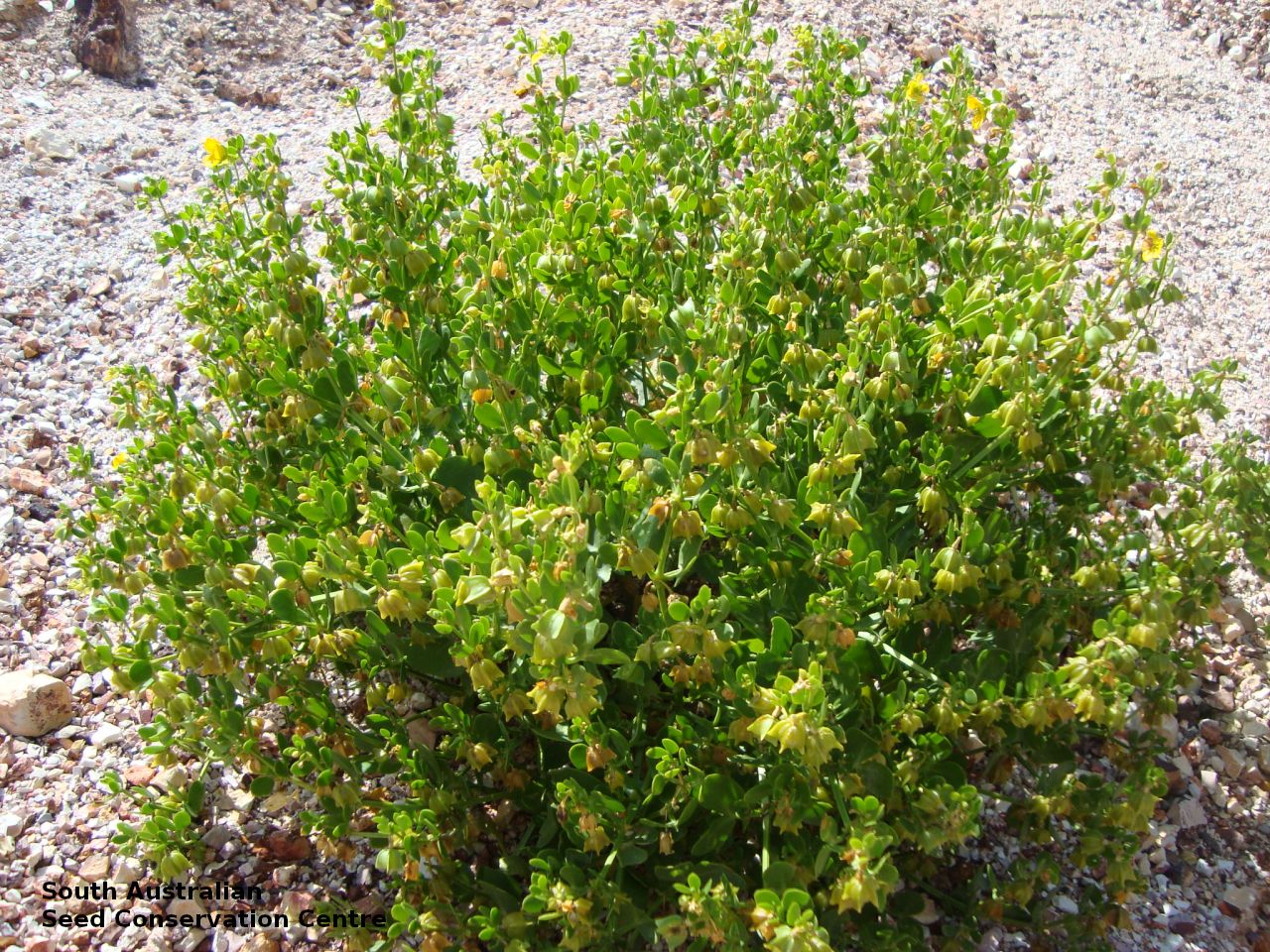
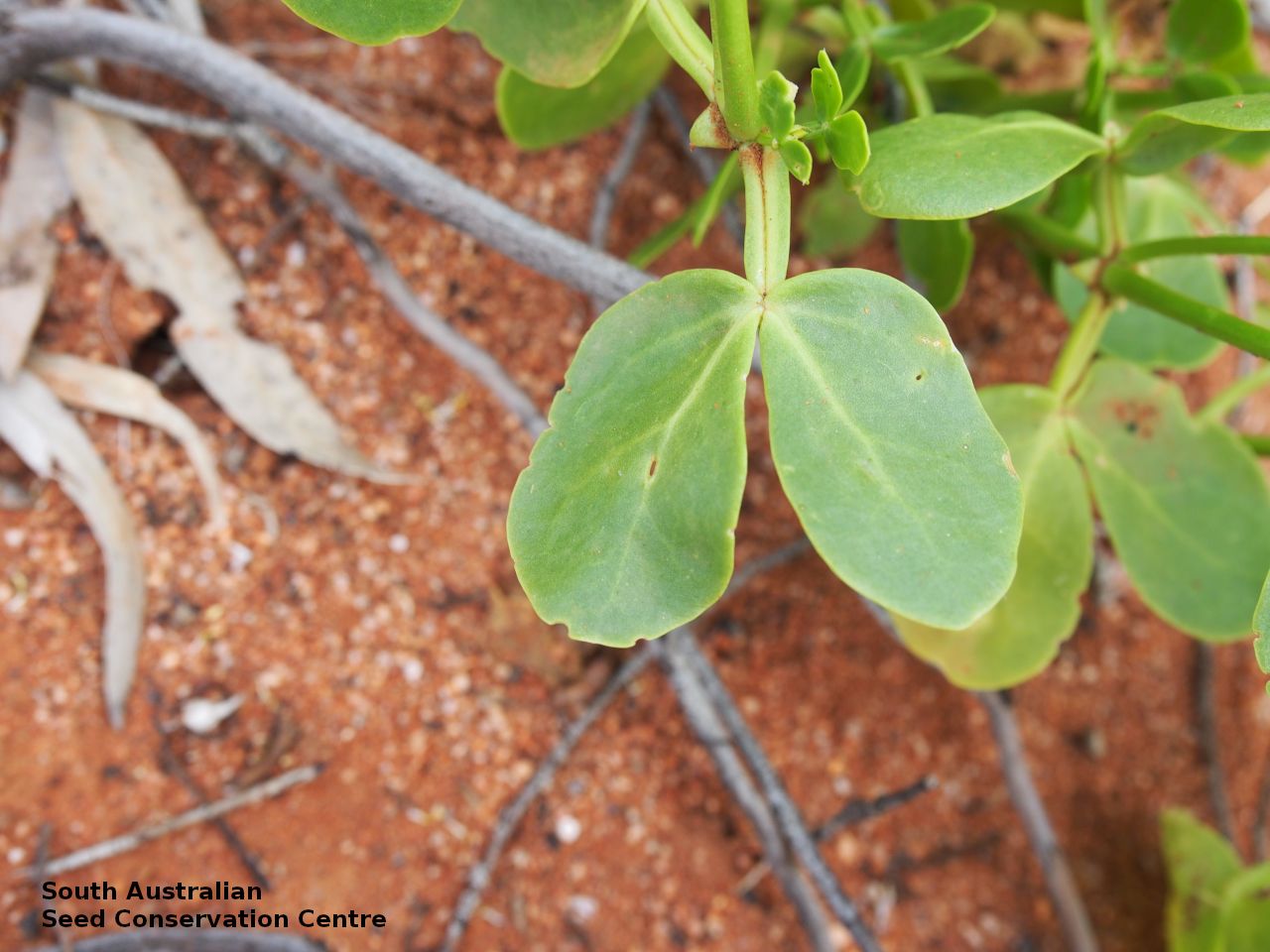
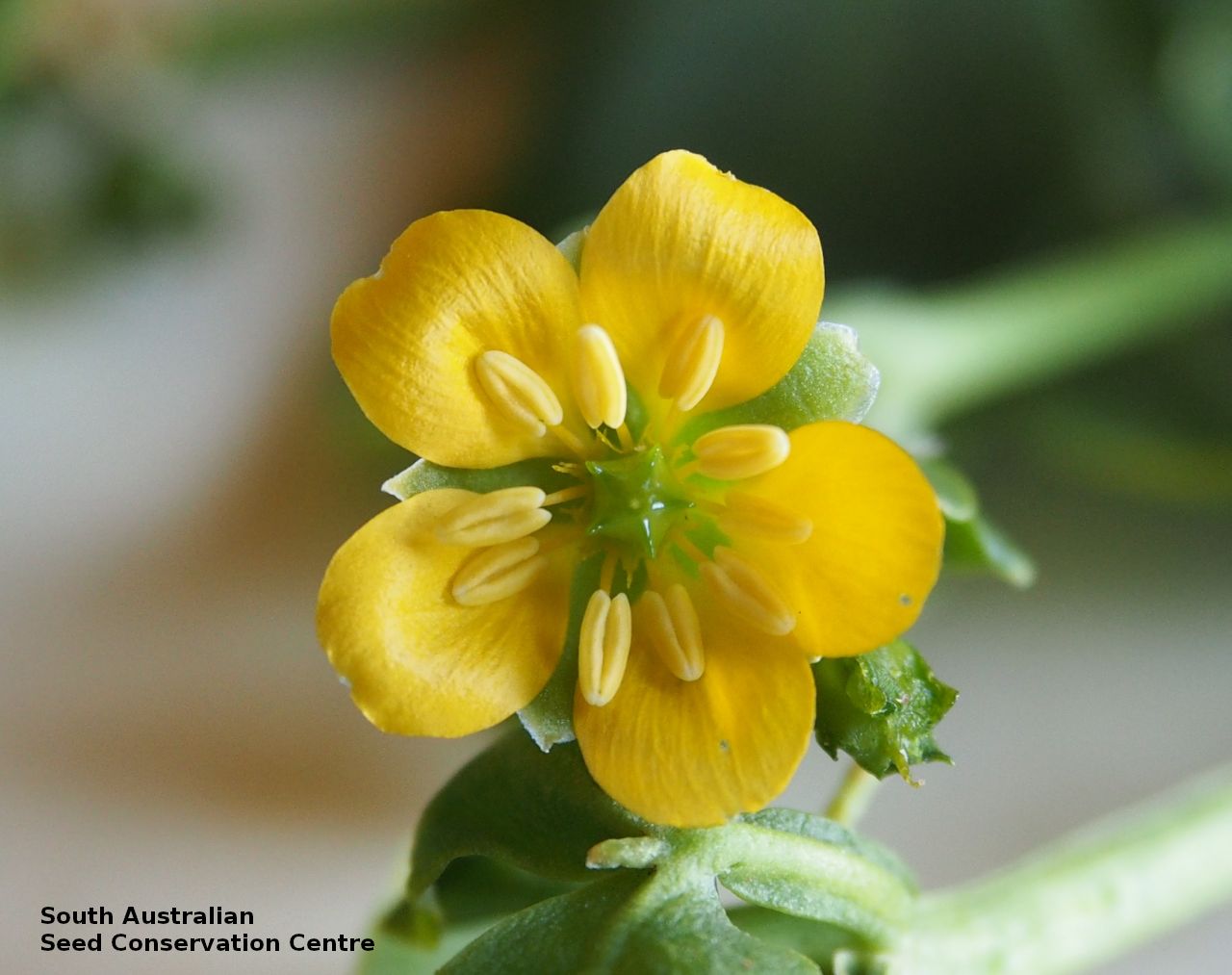
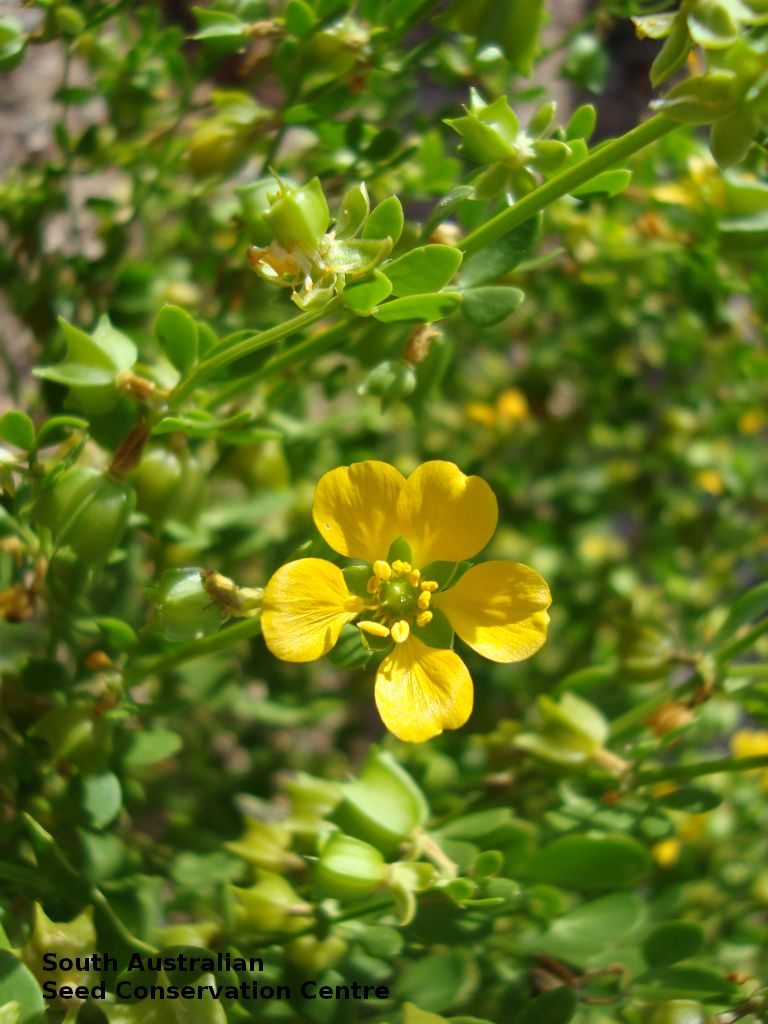
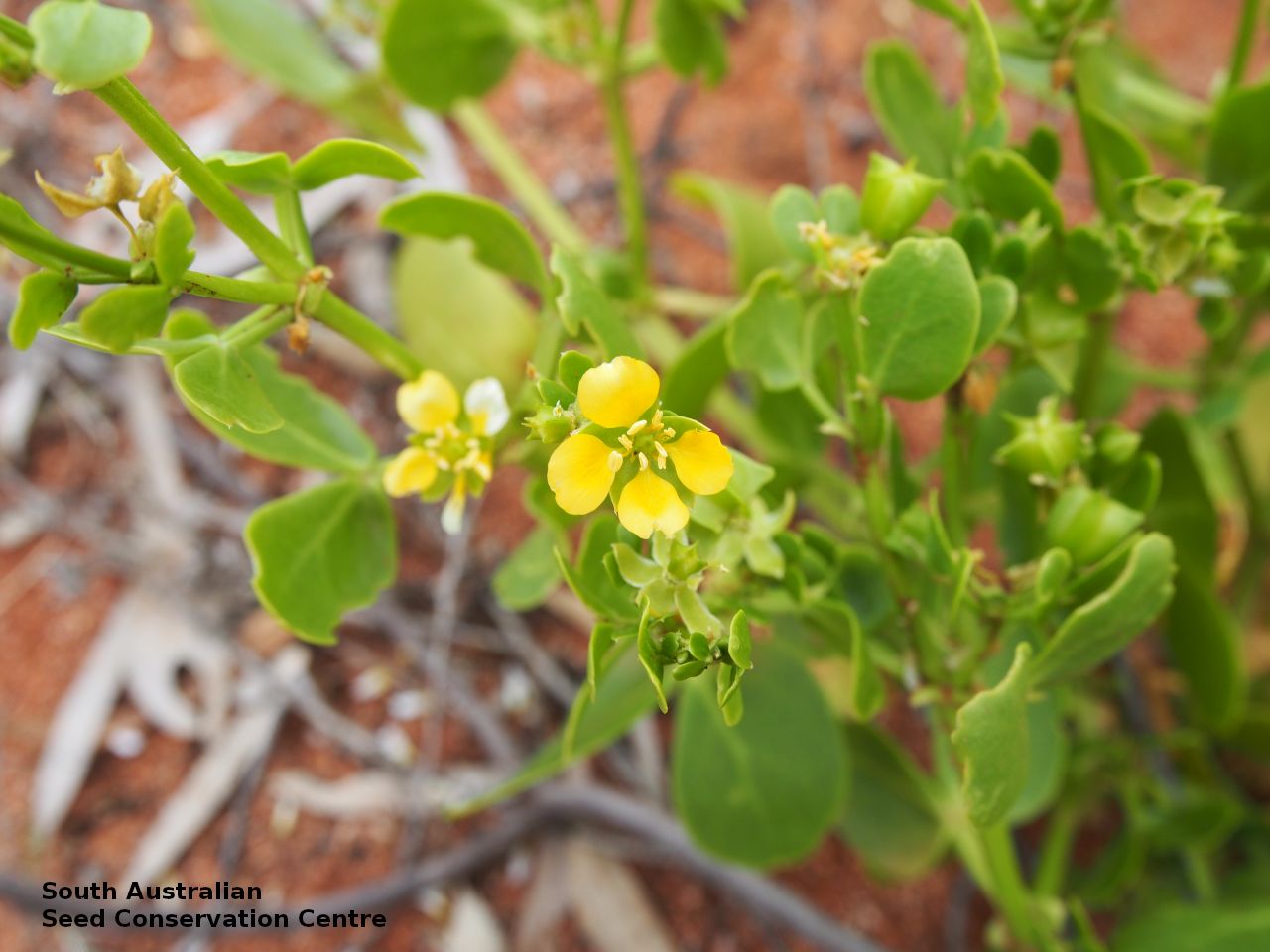
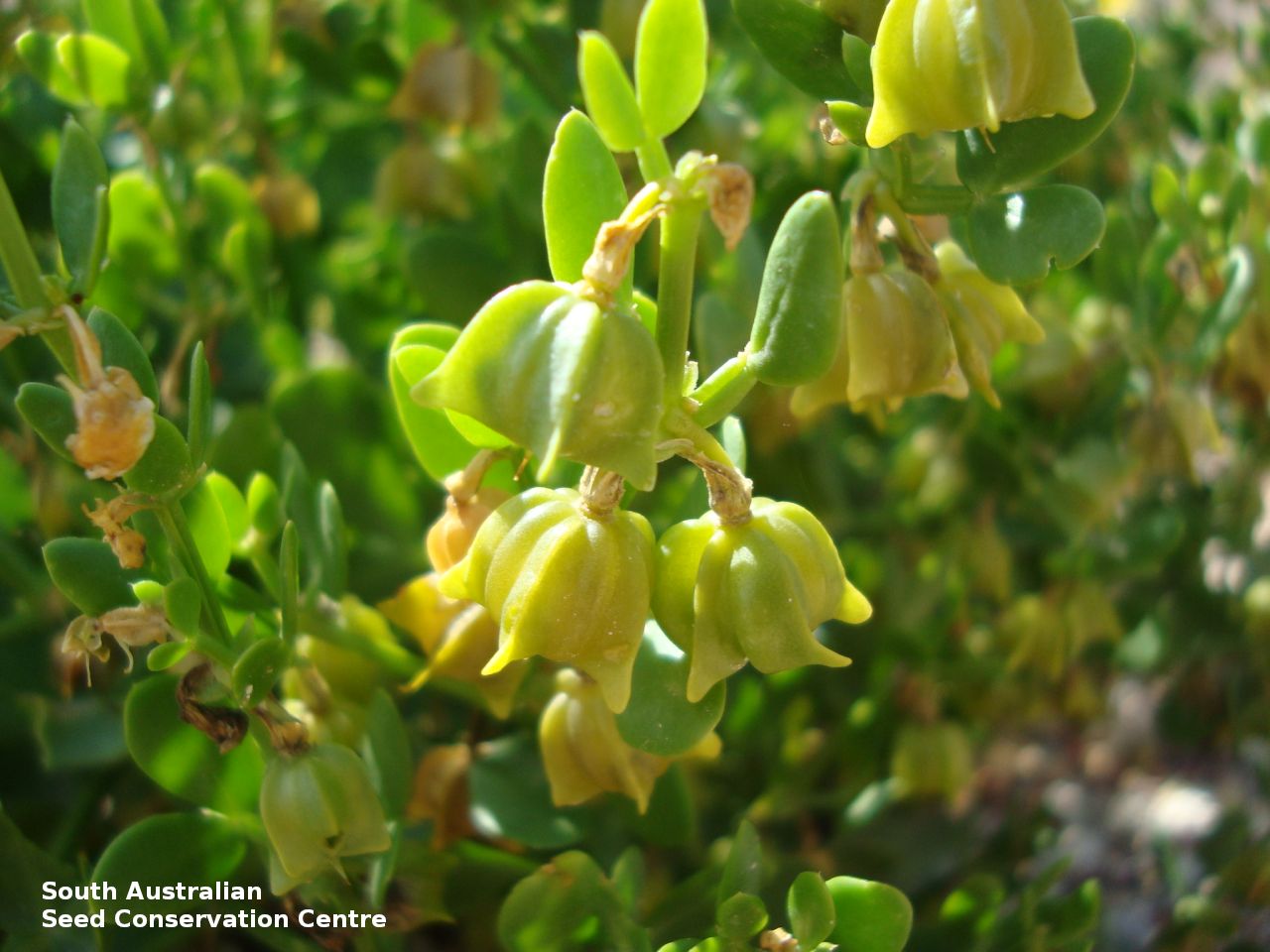

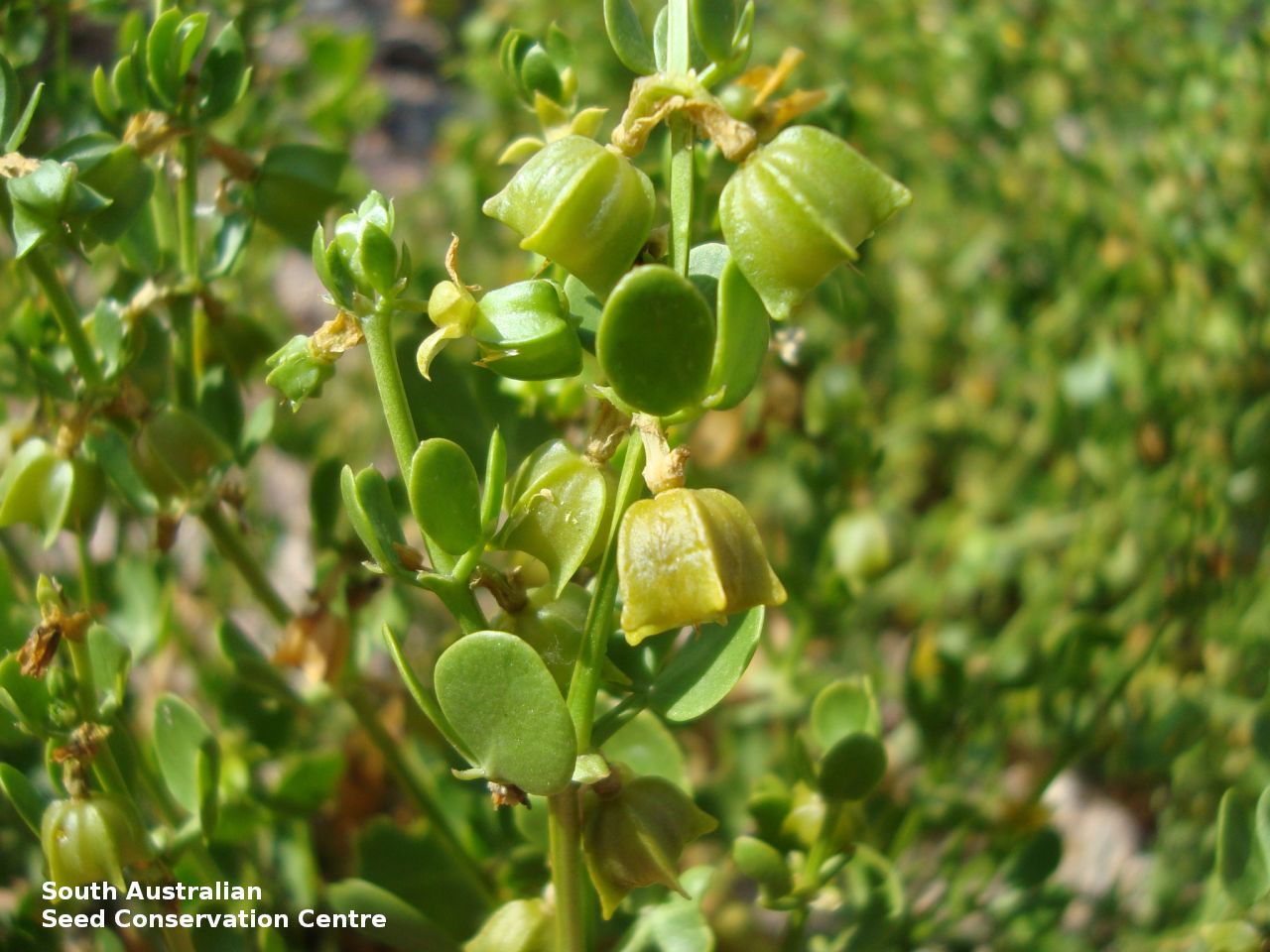
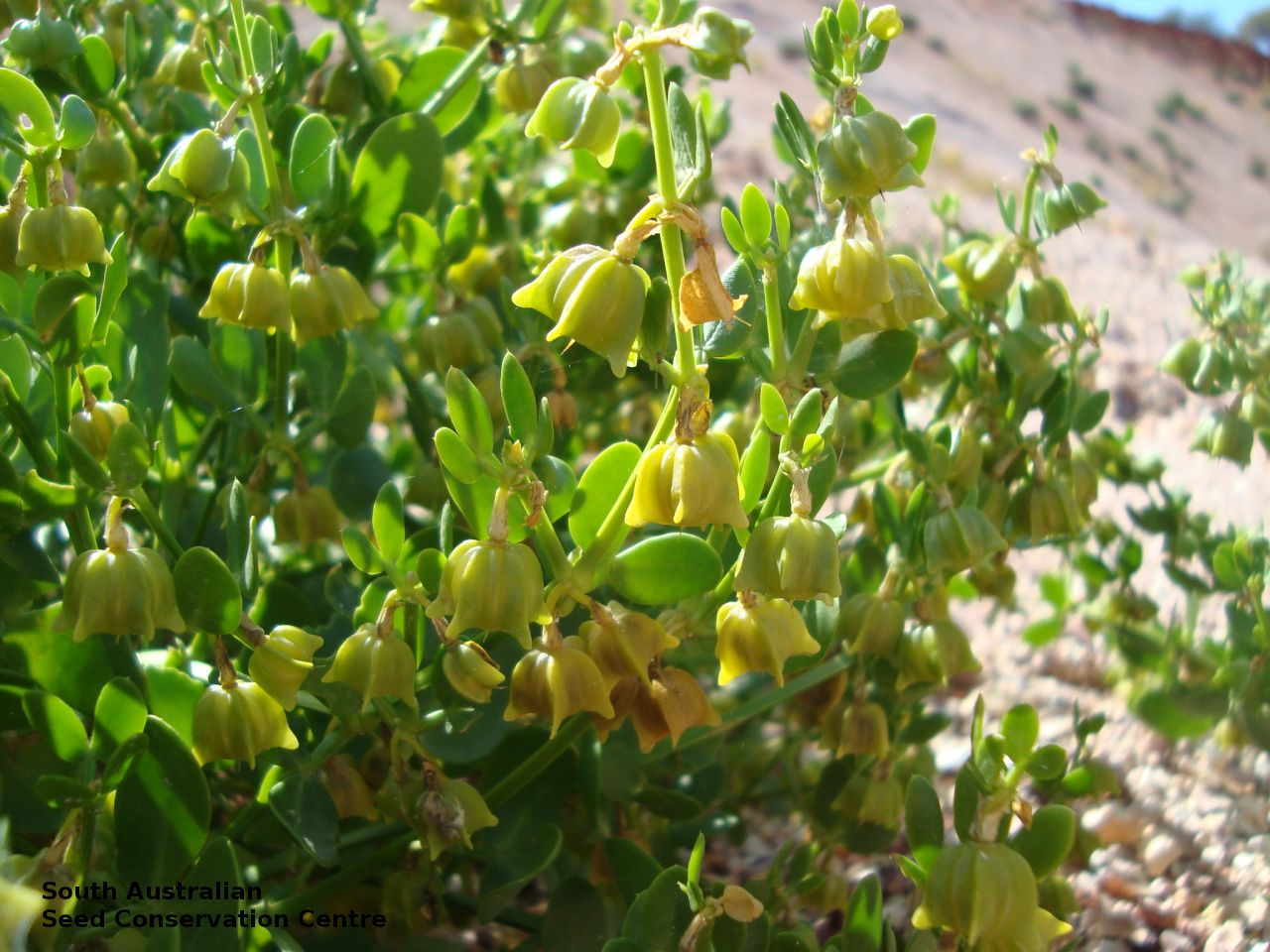
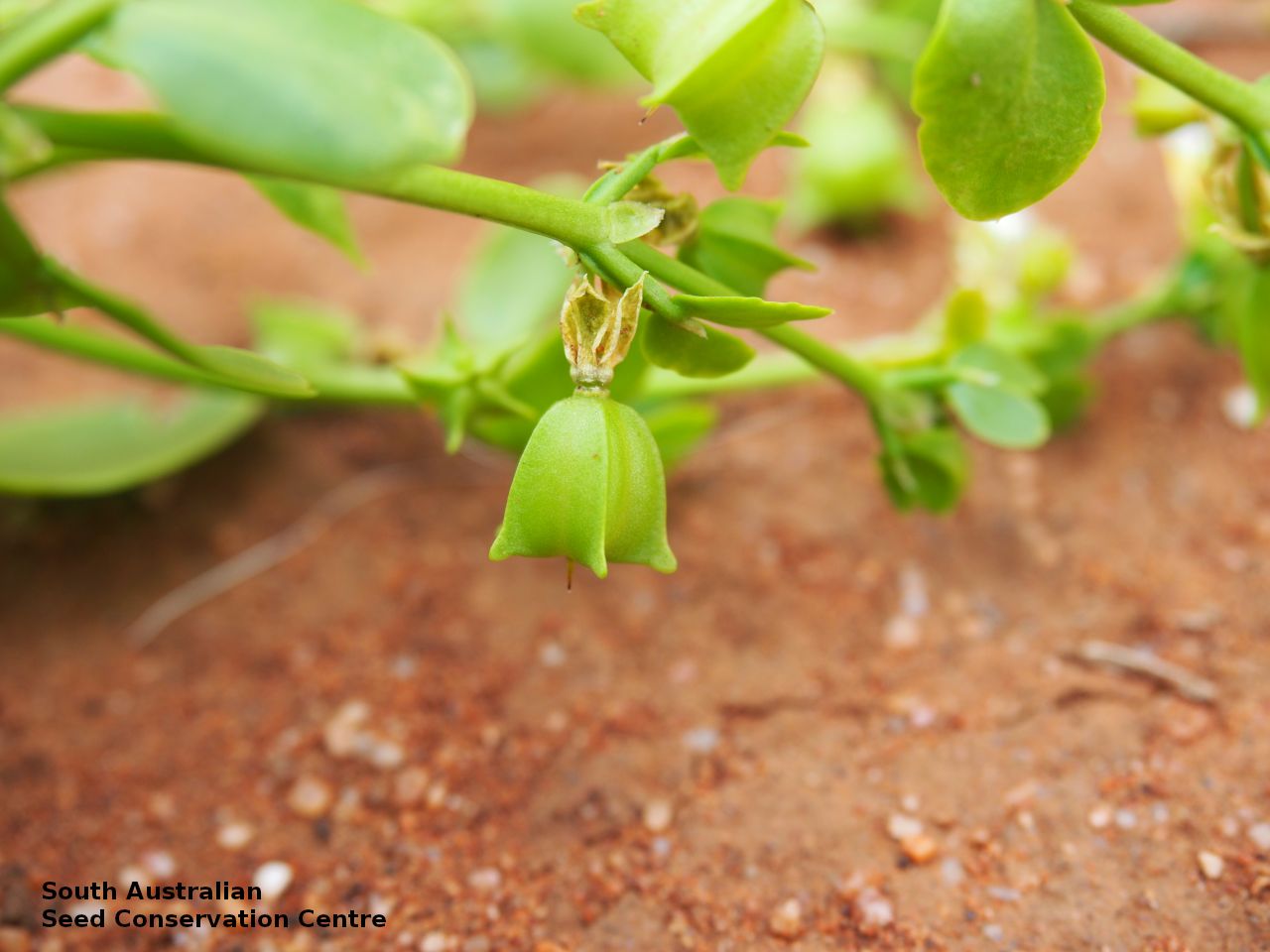
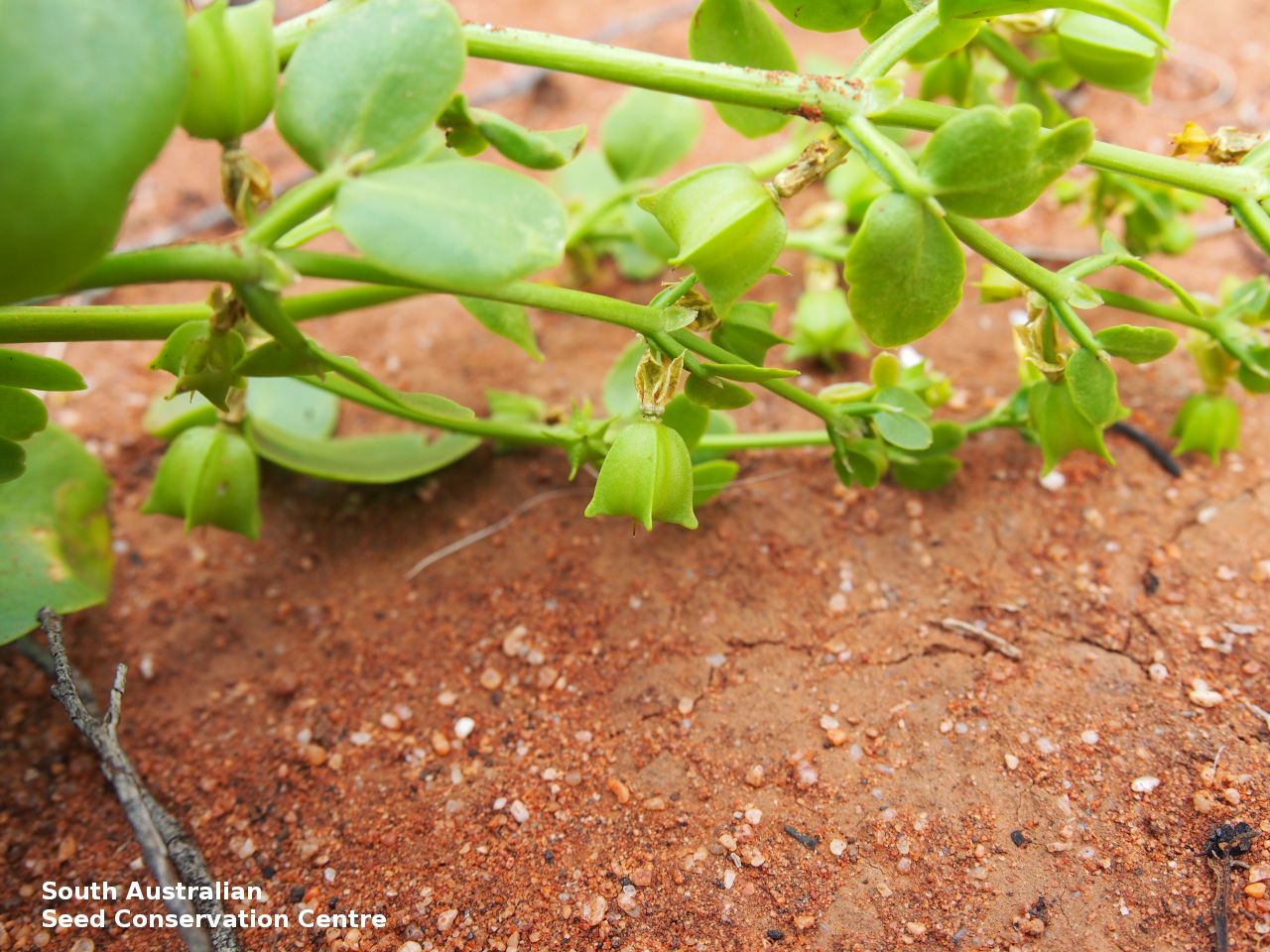

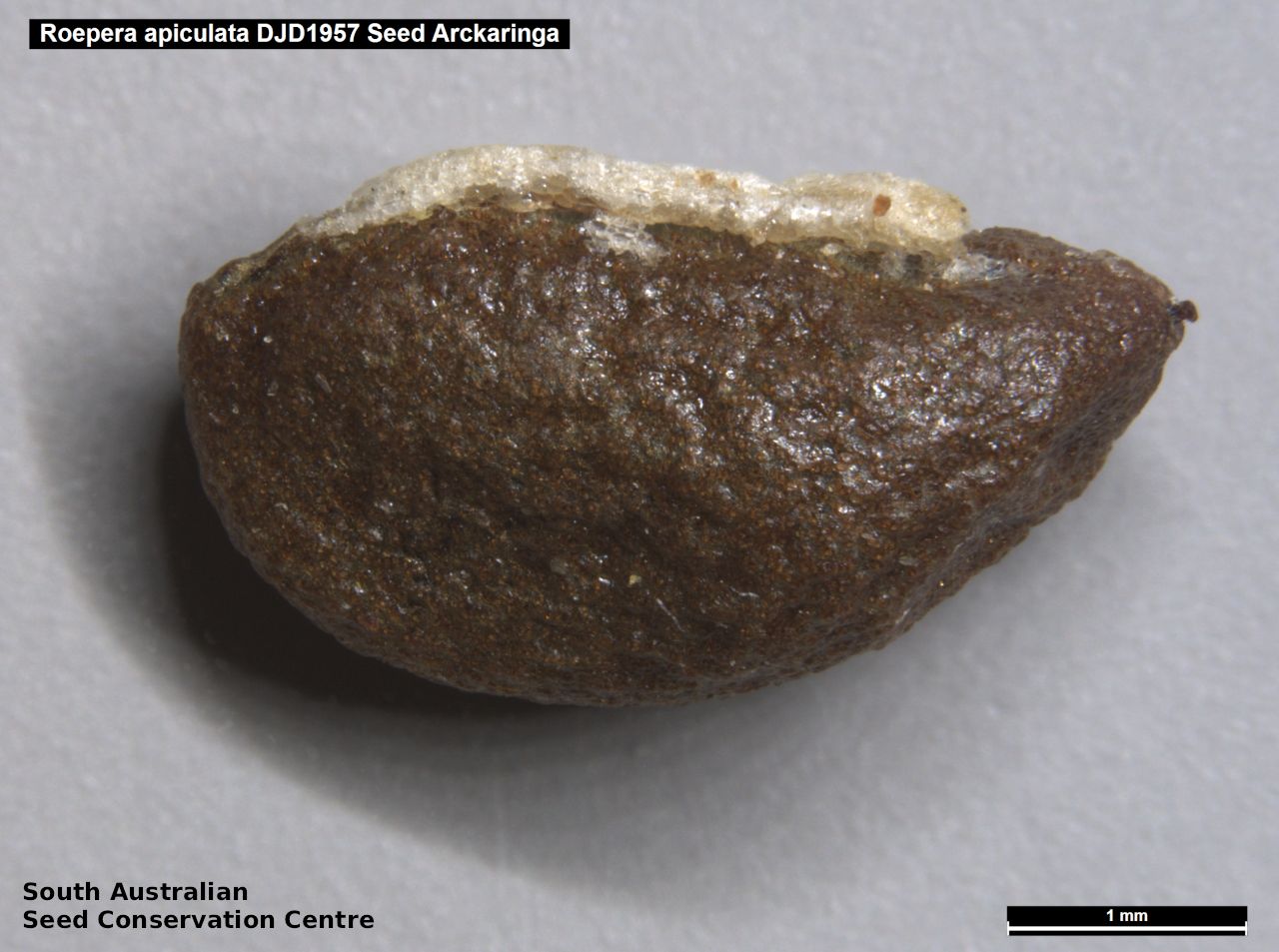
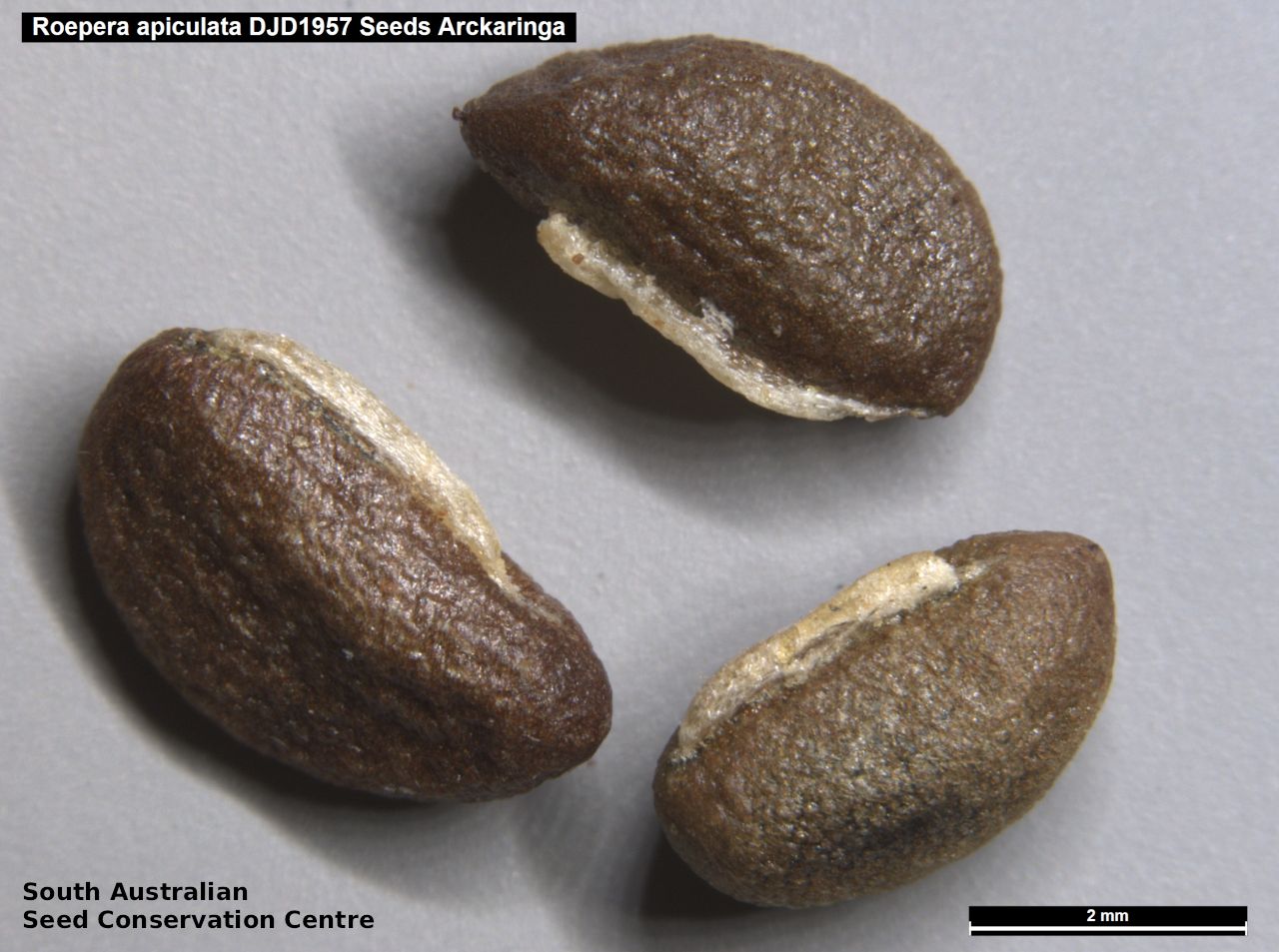

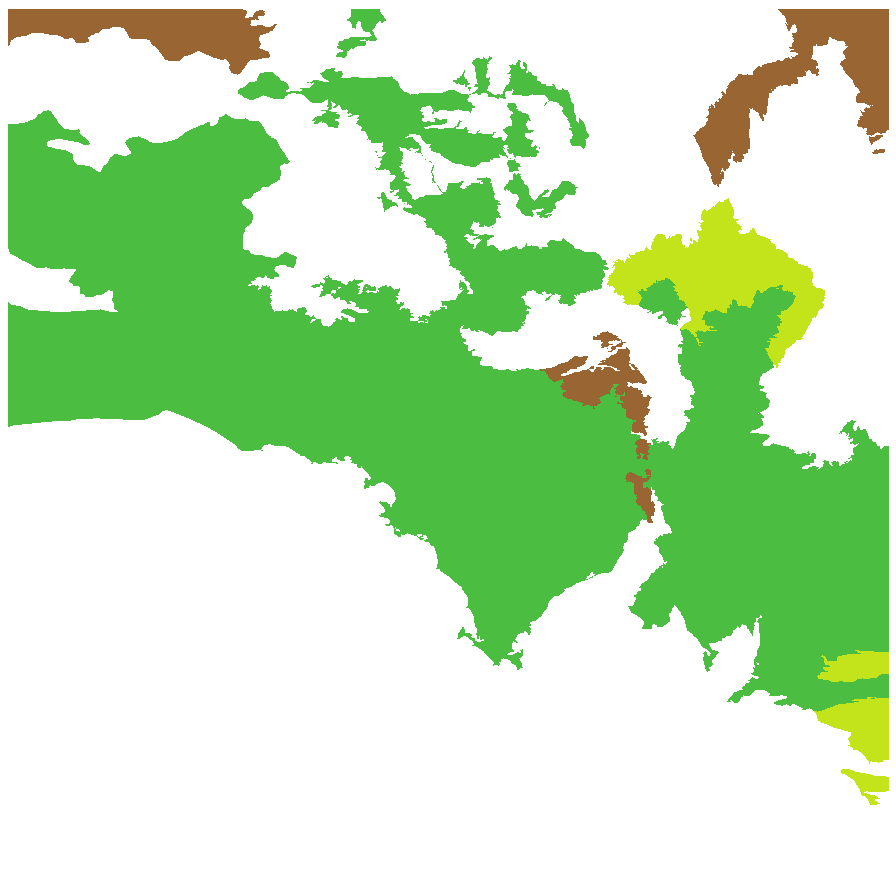
Botanical art
Prior names
Zygophyllum apiculatum
Roepera latifolia
Common names
Pointed-fruit Twinleaf
Pointed Twinleaf
Gallweed
Etymology
Roepera (formally Zygophyllum which is from the Greek 'zygon' meaning pair and 'phyllon' meaning leaf; referring to the pair of leaflets making up each leaf) is named after Johannes August Christian Roeper (1801 -1885), a German botanist and physician. Apiculata from the Latin 'apicatus' meaning pointed tip; referring to the pointed tip of the fruit.
Distribution and status
Found across South Australia except on Kangaroo island and the South-east, growing in mallee and woodland on sandy calcareous soils. Also found in all mainland states. Native. Common in South Australia. Common in all mainland states.
Herbarium regions: North Western, Lake Eyre, Nullarbor, Gairdner-Torrens, Flinders Ranges, Eastern, Eyre Peninsula, Northern Lofty, Murray, Yorke Peninsula, Southern Lofty, South Eastern, Green Adelaide
AVH map: SA distribution map (external link)
Plant description
Erect perennial subshrub to 40 cm high, often compact and bushy, usually with a woody base. Leaves Y-shaped to 80 mm long, green, fleshy with leaflets obliquely obovate, to 40 mm long and 20 mm wide, apex rounded. Flowers bright yellow with 5 sepals and 5 petals. Flowering between August and November. Fruits are pale brown 5-angled capsule to 10 mm long, abruptly truncate at apex with a short, blunt point at the upper corner of each angle with 1 seed per cell. Seeds are brown, ovoid to 4 mm long and 2 mm wide, with smooth surface. Seed embryo type is spatulate fully developed.
Seed collection and propagation
Collect seeds between October and January. Collect semi-dried and dried capsules by running your hands through the stems of the plant. Mature fruits will come off easily and will have a hard and dark seed inside each segment. Place the capsules in a tray and leave to dry for 1 to 2 weeks, depending on how green the fruit is. Then rub the dried capsules to dislodge the seeds. Use a sieve to remove the unwanted material. Store the seeds with a desiccant such as dried silica beads or dry rice, in an air tight container in a cool and dry place. Seed viability is usually high.
| Location | No. of seeds (weight grams) | Number of plants | Date collected | Collection number Collection location | Date stored | % Viability | Storage temperature |
|---|---|---|---|---|---|---|---|
| BGA | 5,000 (46.46 g) | 30+ | 7-Oct-2010 | DJD1957 Lake Eyre | 1-Jan-2012 | 100% | -18°C |
Number of plants: This is the number of plants from which the seeds were collected.
Collection location: The Herbarium of South Australia's region name.
% Viability: Percentage of filled healthy seeds determined by a cut test or x-ray.